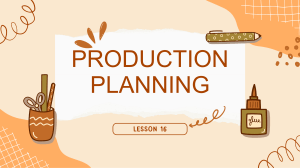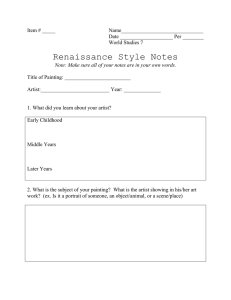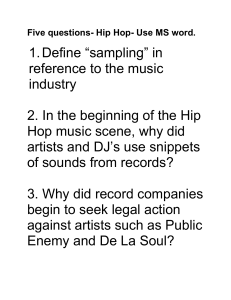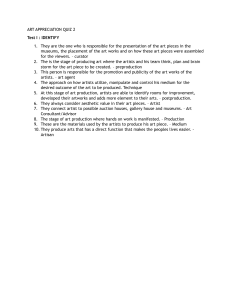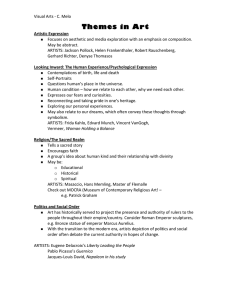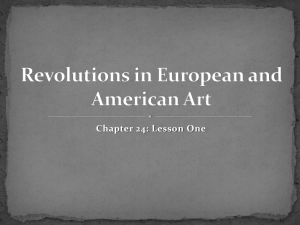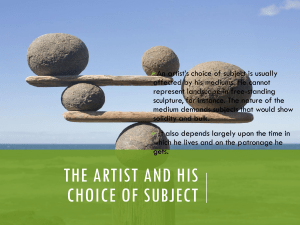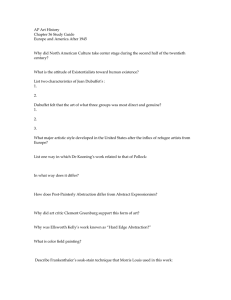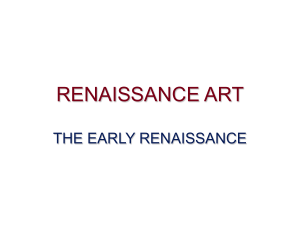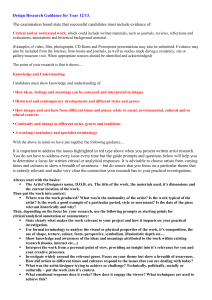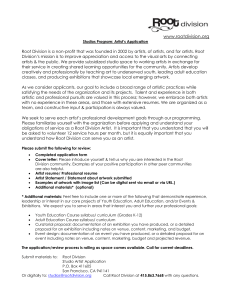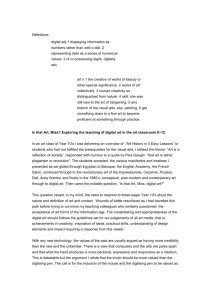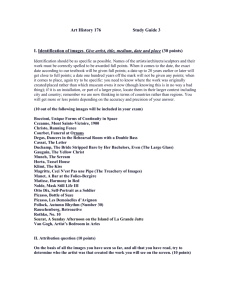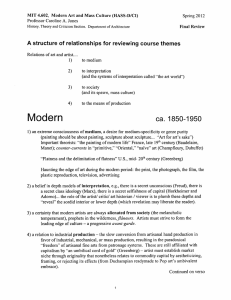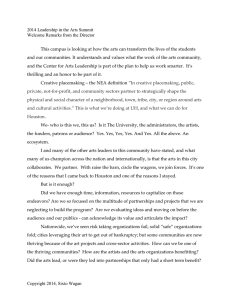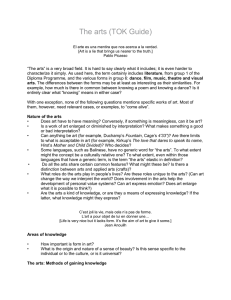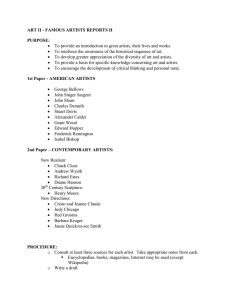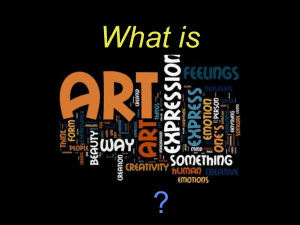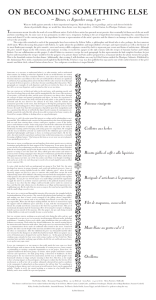Forms of Art
advertisement
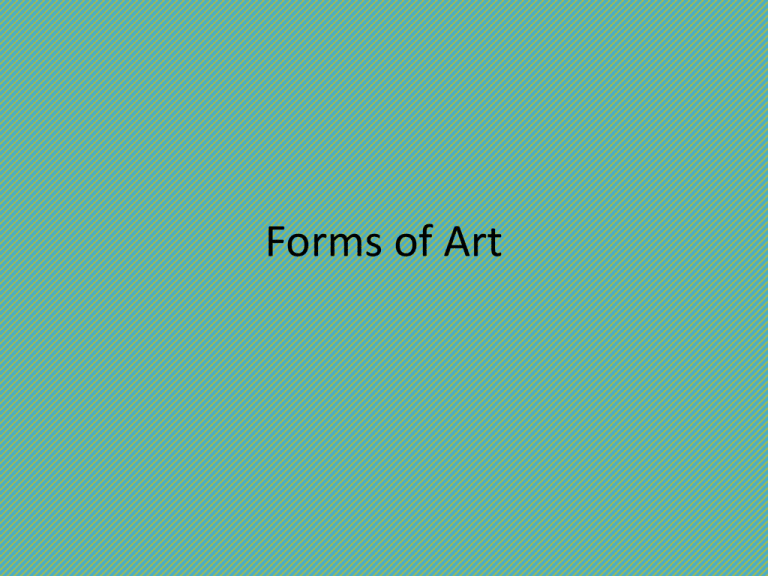
Forms of Art BELL RINGER • USING 3 DIFFERENT COLORS AND AT LEAST 3 DIFFERENT SHAPES DRAW A SYMMETRICAL PATTERN. • DRAW THE PATTERN ON A INDEX CARD What is visual art • Art should mirror reality, it must look like something seen in the real world • Art must be pleasing to the eye, even if it is not realistic • Art should express the artist ideas, beliefs, and feelings so that others can understand them • Not every form of art will have all of these some will have 1 or maybe 2 • Example, some do not look life like but succeed in communicating ideas and feelings Andrew Wyeth Soaring Nancy Graves, Zaga Hugo Robus, Despair VARIOUS FORMS OF ART CONTINUED 2 PRIMARY FORMS OF ART EXIST FINE ARTS & APPLIED ARTS • Fine arts refers to painting, sculpture and architecture, arts which have no practical function and are valued in terms of the visual pleasure they provide or their success in communicating ideas or feelings • One exception is architecture, which can be both attractive and functional • Applied arts is most often used to describe the design or decoration of functional objects to make them pleasing to the eye • Artists who create applied arts or crafts are usually referred to as designers artisans, or craftspeople. Maria and Julian Martinez black on black storage jar Chrysler Building Why Artist Create • Do artists create as a means of gaining recognition and glory? • This is actually a new thought • During the middle ages the names of most artists were unknown • This changed during the Renaissance when artists hoped to gain fame through their art The Impulse to Create • Most artist admit that they continue to create art simply because they have to; – Ex: Katushika Hokusai, as seen below, was so driven to do art that he illustrated 437 different volumes and no fewer than 30,000 pictures Art in Your Life • Self expression art allows you to express and idea or emotion in a work of art – EX this artist used his painting to communicate personal emotions in a subtle and poetic manner Edvard Much, Starry Night Art in Your Life • Decision Making and Problem Solving – When you examine and create art you do both • What subject should I paint or sculpt? • Which medium and technique should I use? • How can I arrange those colors, shapes, lines most effectively? • Examining Art involves similar skills – Identify the subject depicted in the art work – Determine the medium and technique used Art in Your Life • Real World connections – It helps build ideas and nurture a place in the mind for original ideas to take hold and grow – Art Education provides experience in problem solving process areas such as: • • • • • Clarify the problem Identify possible outcomes Test each possible solution Select the solution that seems most appropriate Also nourishes an appreciation of differing points of view, flexible thinking and self discipline Arts in Your Community • Museums – the function of a museum is to encourage the enjoyment of art through direct interaction with original works of art – They identify and display artworks that have been judged to be significant by members of the art community – Exhibits are offered all throughout communities – Libraries and Online Resources best sources about art and artists TICKET OUT THE DOOR • 3RD & 4TH PERIOD EXPLAIN HOW FINE ARTS DIFFER FROM APPLIED ARTS • 5TH PERIOD IDENTIFY 3 PLACES WHERE A PERSON CAN OBTAIN INFORMATION ABOUT ART AND ARTISITS
